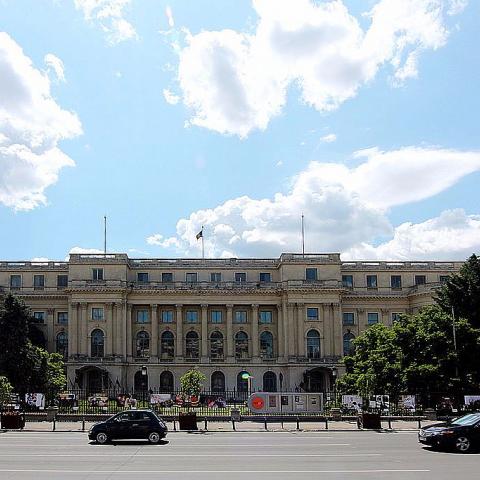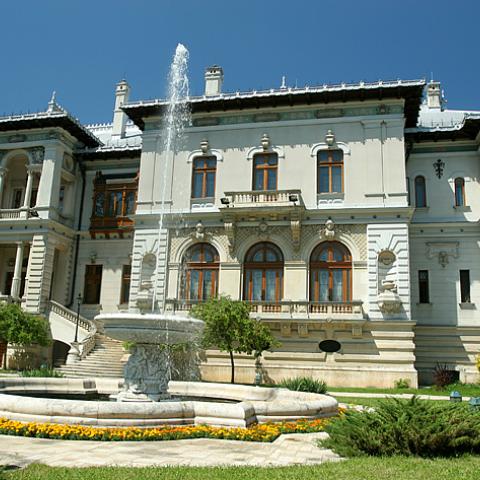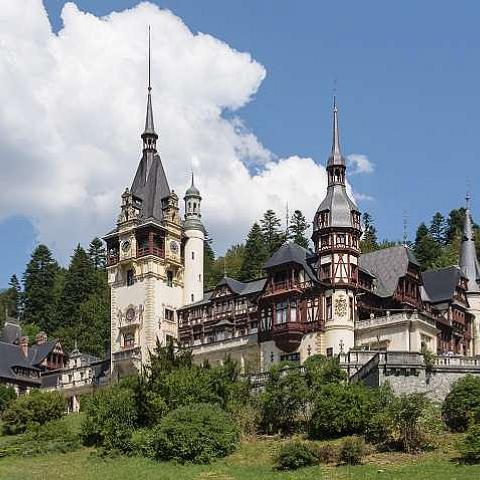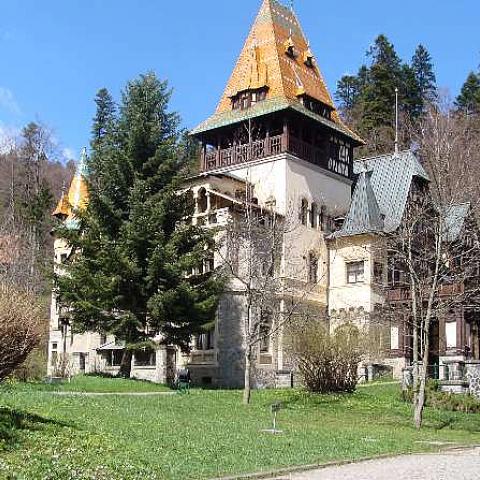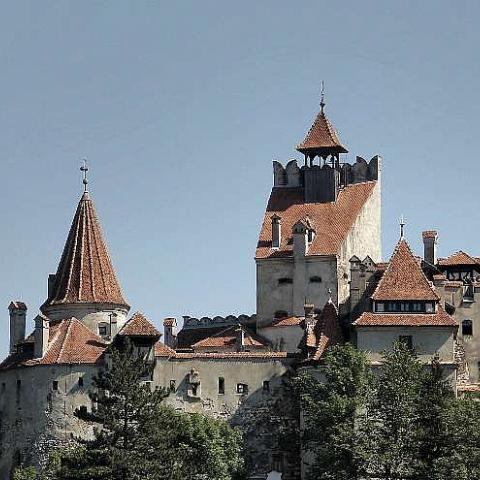King’s Day special: In the footsteps of Romania's Royal Family

May 10 is a special day for Romania's Royal Family this year as it marks 150 years since its establishment. German Prince Karl von Hohenzollern-Sigmaringen (Carol I) first arrived in Bucharest and started his reign as Ruling Price of Romania on May 10, 1866.
May 10, which was Romania's National Day between 1866-1916 and 1918-1947, also marks the country's declaration of independence from the Ottoman Empire, which was approved by the Senate on May 10, 1877. On May 10, 1881, Carol I was crowned the first king of Romania, and subsequently the King's Day would be celebrated each year on this date.
Although monarchy was abolished in Romania in 1947, after the communists forced King Michael to abdicate, May 10 remains a symbolic date for Romania, and the Royal Family has been celebrating with special events every year. Several events have also been organised this year in Bucharest and Sinaia mountain resort.
The Romanian capital and Sinaia are two of the Romanian cities where Romania's Royal Family has left its mark. Here are some of the places where the royal footsteps have echoed throughout the years and where important pages in Romania's history have been written:
The Royal Palace of Bucharest, which currently hosts Romania’s National Art Museum, is located on Calea Victoriei, close to other important landmarks, such as the Romanian Athenaeum. The palace was first used as a royal court in 1837. On May 10, 1866, it became the residence of Carol I. The original building was destroyed in a fire, in 1926, and the current palace was built in 1937, based on Romanian architect Nicolae Nenciulescu’s plans. The Romanian throne hall used to be located in this palace.
The Royal Family has never owned the Royal Palace, but King Carol II owned several properties in the vicinity, including Casa Noua (The New House), which he used as a residence during his reign. King Michael I also used this house as a residence. It was in this house that King Michael arrested Marshal Ion Antonescu, on August 23, 1944, when Romania turned against Nazi Germany. The villa, which was located on the spot of the current Sala Palatului (the Palace Hall) was then destroyed by German bombing in World War II when the Royal Palace was also badly damaged.
The Cotroceni Palace, which currently hosts Romania’s Presidency, also used to be a royal palace. King Carol I ordered this palace built for the future heirs to Romania’s throne. The construction of the palace started in 1888 and was coordinated by French architect Paul Gottereau. King Ferdinand I and Queen Marie further expanded and improved the palace. The communists took control of the palace in 1947, after King Michael’s abdication. They modified it and turned it into a protocol building. The 1977 earthquake badly damaged the Cotroceni Palace, which had to be restored and consolidated. The Palace became the Romanian President’s residence in 1991.
Discover Bucharest: Green and quiet - a visit to the Cotroceni museum
The Elisabeta Palace in Bucharest is now the Royal Family’s official residence in Romania. Located on Kiseleff boulevard, the palace was designed by architect Corneliu Marcu in 1930 and built in 1936. It was meant to be a residence for King Ferdinand I and Queen Mary's daughter, Princess Elisabeth, King Michael's aunt. Its construction took one year. Its architecture combines the Moorish and Brancovenesc styles, which makes it unique among Bucharest' palaces.
King Michael I used the Palace between August 1944 and December 1947 when he was forced to abdicate. In 2001, the building was again made available to the Royal Family, through a bill passed by the Senate. Since then, the palace hosted hundreds of meetings between members of the Royal Family and representatives of the political, cultural, economic and academic environment, as well as visits of members of Royal Families in Europe.
Most of the Royal Family’s events and public meeting take place at the Elisabeta Palace.
The Savarsin Castle (in opening picture) is the place where the Royal Family spends the winter holidays. The castle became the property of King Michael I in 1943. However, the King was forced to abdicate four years later, in 1947, and the communist authorities confiscated the castle. The building served as a hospital for internal diseases, a tuberculosis sanatorium and nervous disorders sanatorium. At one point, late communist dictator Nicolae Ceausescu turned the castle into a guesthouse, a residence for heads of state. Savarsin Castle returned to the Royal Family in 2001.
Located in Savarsin, Arad county, the castle was restored according to information in Queen Elena’s diary. The restoration work started in 2007 and was made after an initial plan developed by the Royal House’s architect Serban Sturdza. Architects Eugen Panescu and Emilian Cordos have also helped with the project while professor architect Augustin Ioan has provided consultancy. Built heritage specialist David Baxter has also worked with the Royal Family during these eight years. The restoration work ended in October last year.
Peles Castle is a Neo-Renaissance castle built in Sinaia, Prahova County, at the order of King Carol I. German architect Johannes Schultz designed the castle and combined various features of European architectural styles. Work was led by Czech architect Carol Benesch while, another Czech architect Karel Liam, designed the towers. Several auxiliary buildings were built with the castle: the guards’ chambers, the Economat Building, the Foisor hunting lodge, the royal stables and a power plant.
After Carol I’s death, the castle was inherited by King Ferdinand and later by King Michael. Peles Castle had the same fate as the other properties of the Royal Family: after King Michael’s abdication in 1947, the Communist regime seized the property. The building was declared a museum in 1953, but Communist dictator Nicolae Ceausescu decided to close the entire estate in 1975. After the revolution in December 1989, the whole property was re-established as a heritage site, and the castle and its ground were reopened to the public.
Travel Planner: Sinaia revisited – Peles Castle.
Pelisor Castle is also part of the Peles Castle complex and was built in 1899 – 1903 by order of King Carol I as a residence for his nephew and heir King Ferdinand. In November last year, the heart of Queen Marie of Romania has finally found its rest at the Pelisor Castle in Sinaia mountain resort, in the room where it beat for the last time.
According to her last wish, her body was buried at Curtea de Arges Monastery in Romania, and her heart was placed in a small golden casket and interred in her Stella Maris chapel in Balchik. After that area was ceded to Bulgaria, in 1940, her heart was transferred to Bran Castle, one of the Queen’s favorite places. The communist regime moved the heart once again and put it in storage at the National Museum of History in Bucharest.
The Royal Train is an important symbol of the Royal Family of Romania. Built in Italy at the request of the Romanian state, the train was inaugurated in 1928 and was supposed to be a means of transport for King Ferdinand and Queen Marie, on their numerous visits across Great Romania. However, the Royal House received the train one year after King Ferdinand’s death. In its first decade, the train was used by Queen Marie, King Michael, Queen Mother Elena, and King Carol II.
The train consists of five wagons: the Dining Wagon, the King’s Wagon, the Queen’s Wagon, the Guests’ Wagon, and the King’s House Wagon.
Last year, the train made a special trip on December 1, Romania’s National Day. The train remade the Turnu Severin – Bucharest route as a tribute to King Carol I, 150 years after his arrival in the country.
Irina Popescu, irina.popescu@romania-insider.com
(Photo source: Wikipedia)







